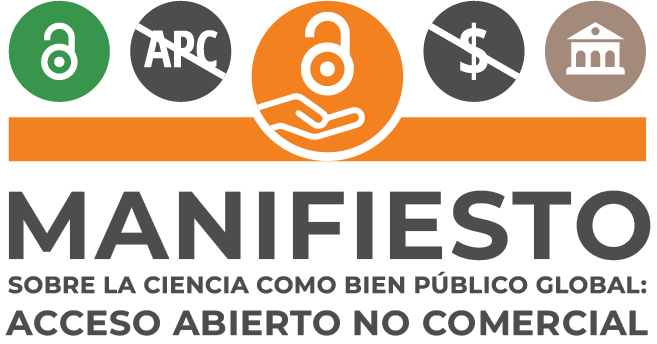Implementation of a training plan for the use of ICT within the teaching-learning process for teachers of the U.E. Lautaro Aspiazu Sedeno
DOI:
https://doi.org/10.59343/yuyay.v1i2.16Keywords:
Multimedia, interactive, autonomous, resources, qualityAbstract
The following proposal is designed from the educational environment and proposes a recognition and management of technological educational tools within the teaching-learning process. This project takes a journey from the recognition of ICT and its importance for its multiple benefits to improve quality in education. The training plan for the training of digital educational resources, competencies that will allow teachers pedagogical innovation resorts to making use of different resources or applications to create content according to their needs and requirements thereby increasing the level of education, serving students in their different contexts in a timely manner, significantly converting traditional education into modern education with the use of ICT.
The course was structured in five units, the first "Fundamentals of ICT", the second "Internet and Education" the third "Digital Educational Resources", fourth "Workspace Tools", fifth "Tools for the creation of digital educational content": The course has a final evaluation applying the methodology of flipped classroom which promotes autonomous, flexible and practical learning, For this reason, activities with multimedia and interactive information that cause interest and motivation in the participants are proposed.
Downloads
References
Coufal, K. (2014). Flipped learning instructional model: perceptions of video delivery to support engagement in eighth grade math. (Tesis doctoral).
de Guayaquil–Guayas-Ecuador, S. ANTECEDENTES, CUESTIONAMIENTO Y PROPUESTAS PARA EL AULA REGULAR 2016-2017.
Hernández-Mosqueda, J. S., Tobón-Tobón, S., & Guerrero-Rosas, G. (2016). Hacia una evaluación integral del desempeño: las rúbricas socioformativas. Ra Ximhai, 12(6), 359-376. http://www.redalyc.org/articulo.oa?id=46148194025
Lage, M., Platt, G., y Treglia, M. (2000). Inverting the classroom: A gateway to creating an inclusive learning environment. The Journal of Economic Education, 31(1), 30-43.
Mancero, R. E. (2022). Análisis de viabilidad para el desarrollo de un proyecto de aplicación sobre fracciones mediante el uso de recursos digitales en Moodle Cloud, caso: 9no Año de Educación Básica de La Unidad Educativa Vinces. YUYAY: Estrategias, Metodologías & Didácticas Educativas, 1(1), 91-117. https://jlacolectivo.com/revistas/index.php/YUYAY/article/view/7
Mayea-Carpio, R. I. (2022). Estudio para la aplicación de LMS como apoyo pedagógico para estudiantes de educación básica superior: caso Escuela de Educación Básica José María Barona de Vinces. YUYAY: Estrategias, Metodologías & Didácticas Educativas, 1(1), 118-143. https://jlacolectivo.com/revistas/index.php/YUYAY/article/view/11
T. Malveira de Araujo y A. Rossi, (2005) “Virtual design studio: Vygostky and virtual interaction”, presented at Proc. 9th Iberoamerican Congress of Digital Graphics, Lima - Peru 21-24 november, vol. 1, pp. 310- 314
Olvera, W., Gámez, I. E., & Castillo, J. M. (2014). Aula o modelo invertidos de aprendizaje: Origen, sustento e implicaciones. Los modelos tecno-educativos, revolucionando aprendizaje del siglo XXI, 143-160. http://tebaevmartinez.com/documentos/Aula_Invertida_o_Modelo_Invertido_de_Aprendizaje.pdf
Rivadeneira, E. (2017). Competencias didácticas-pedagógicas del docente, en la transformación del estudiante universitario. Orbis, Revista Científica de Ciencias Humanas, 41-55.
Salazar, S. (2018). La familia asume el uso de las TIC como apoyo al aprendizaje. En M. Gallegos Navas, La inclusión de las TIC en la educación de personas con discapacidad. 147-155. UPS Quito.
Serrano, J (2022) Propuesta metodológica para la elaboración de un guion instruccional que fortalezca las actividades de vinculación comunitaria a través de la práctica artística en estudiantes de Educación General Básica subnivel Superior. http://201.159.223.180/bitstream/3317/19226/1/T-UCSG-PRE-FIL-CE-32.pdf
Serrano-Macias, J. H. (2022). De lo experimental a lo creativo:: Metodología Didáctica para aprender jugando. YUYAY: Estrategias, Metodologías & Didácticas Educativas, 1(1), 51-70. https://jlacolectivo.com/revistas/index.php/YUYAY/article/view/5
Siemens, G. (2005). Connectivism: A Learning Theory for the Digital Age. Connectivism: A Learning Theory for the Digital Age. Retrieved.
Tigse Parreño, C. M. (2019). El constructivismo, según bases teóricas de César Coll. Revista Andina de Educación, 2(1), 25-28. https://revistas.uasb.edu.ec/index.php/ree/article/download/659/635/
Triglia, A. (2018). Las 4 etapas del desarrollo cognitivo de Jean Piaget. Universidad de Guadalajara. http://biblioteca.udgvirtual.udg.mx/jspui/handle/123456789/2942

Published
How to Cite
Issue
Section
Categories
License
Copyright (c) 2023 Martha Magaly Cervantes-Vergara

This work is licensed under a Creative Commons Attribution-NonCommercial-NoDerivatives 4.0 International License.
You are free to:
Share — copy and redistribute material in any medium or format.
- Licensor cannot revoke these freedoms if you follow the terms of the license.
Attribution — You must give credit appropriately, provide a link to the license, and indicate if any changes have been made. You may do so in any reasonable way, but not in a manner that suggests that you or your use are supported by the licensor.
NonCommercial — You may not use the material for commercial purposes.
NonDerivatives — If you remix, transform, or create from the material , you may not distribute the modified material.
No additional restrictions — You may not apply legal terms or technological measures that legally restrict others from making any use permitted by the license.






















